Not since Dragon Age: Origins was first released have I fallen so thoroughly into a game’s world. The overwhelming bleakness of The Witcher 3: Wild Hunt had me caring for every ravaged Northern village I passed through, wrestling with how little I could do in absolute terms to improve the lives of these people. Most games have you killing bandits. The Witcher 3: Wild Hunt practically begged me not to in one early quest, because of the trouble it would bring down on the rest of the village as a result. The prologue had already shown the brutal consequences of a tavern brawl — a beloved fantasy cliche. This time, I had Geralt make a conscious choice. He brought the three bandits a drink, exchanged some terse small talk and was then free to leave. The innkeeper thanked Geralt for not making a bad situation worse. That was just a step along a minor quest, but the care that CD Projekt Red have put into their game shone through, as it absolutely sizzled with tension.
The Witcher 3: Wild Hunt is a dark fantasy action RPG that concludes the saga of gruff, cat-eyed protagonist Geralt of Rivia. Geralt is a Witcher, a spellsword trained and mutated from childhood to become a near-superhuman monster slayer. The game’s prologue finds him in search of the two most important people in his life: his lover, Yennefer, and his adopted daughter, Ciri. For different reasons, both are being pursued by a terrifying supernatural force known as the Wild Hunt. Like a lot of things in life, this game is much more about the journey than the destination. Geralt’s journey sees him make his way through three huge, distinct, and open areas of the Northern Kingdoms and their surrounds. Roman Empire analogue Nilfgaard is on the brink of completing a crushing invasion of them, but begins the game in a temporary stalemate against the last two of these kingdoms, united under the banner of the stern king Radovid V.
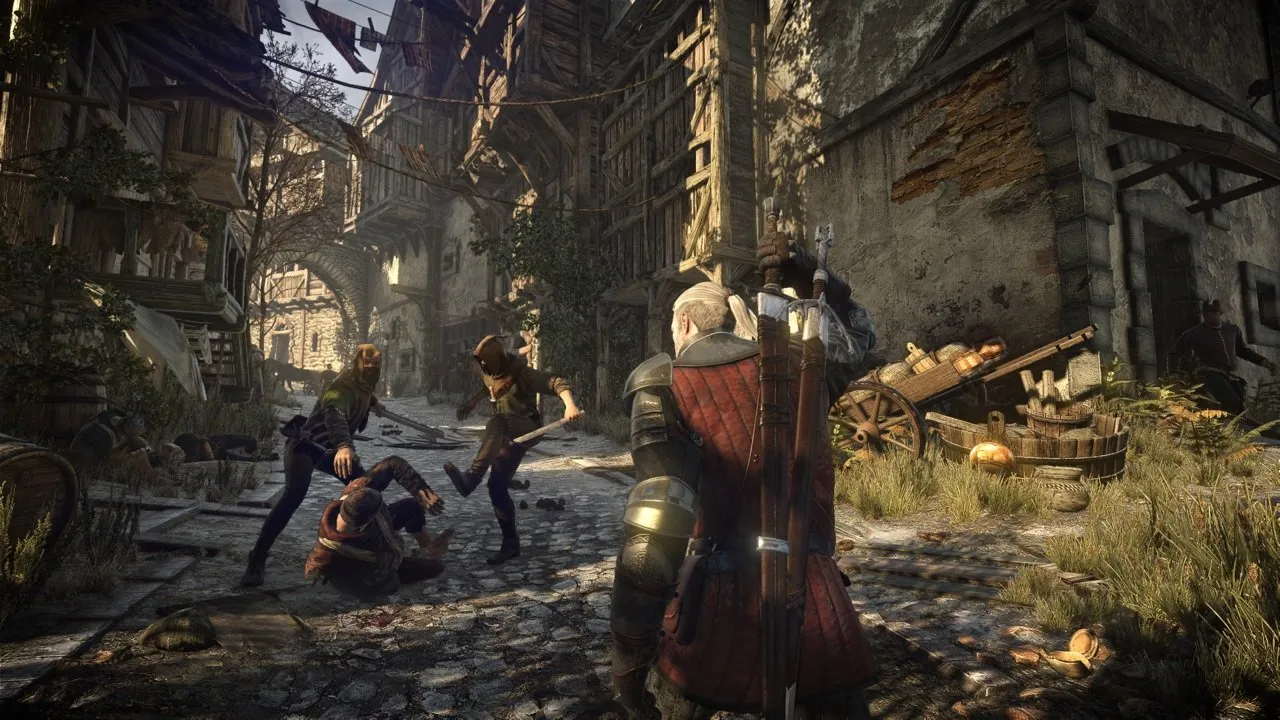
The Witcher 3: Wild Hunt expects and rewards preparation above all else. Anybody who plays it like an Assassin’s Creed title or other action game will find themselves reloading frequently — I should know, because that’s how I initially approached it. Mashing attack might kill a few stray dogs, but that’s about it, as I found out. Side quests are all but mandatory, as enemies do not scale to the player’s level. It’s one among many ways that The Witcher 3: Wild Hunt makes you feel like one man in a very large world. That’s one of the things I really appreciated about the game. The tutorial, if enabled, will nudge you once or twice, but afterwards will leave you with plenty of rope with which you are free to hang yourself with. Multiple save files are a must for this reason.
The game’s soundtrack was generally fairly restrained, but battle seemed to bring out the silly side of it. Each time the chorus of wailing warrior women got started, I felt like Geralt and I had stepped into an episode of Xena: Warrior Princess. In a way, that’s an apt comparison. As Geralt slashes, pirouettes and leaps through skirmishes, I can’t help but think of Xena, beloved in part for its occasionally slapstick choreography.
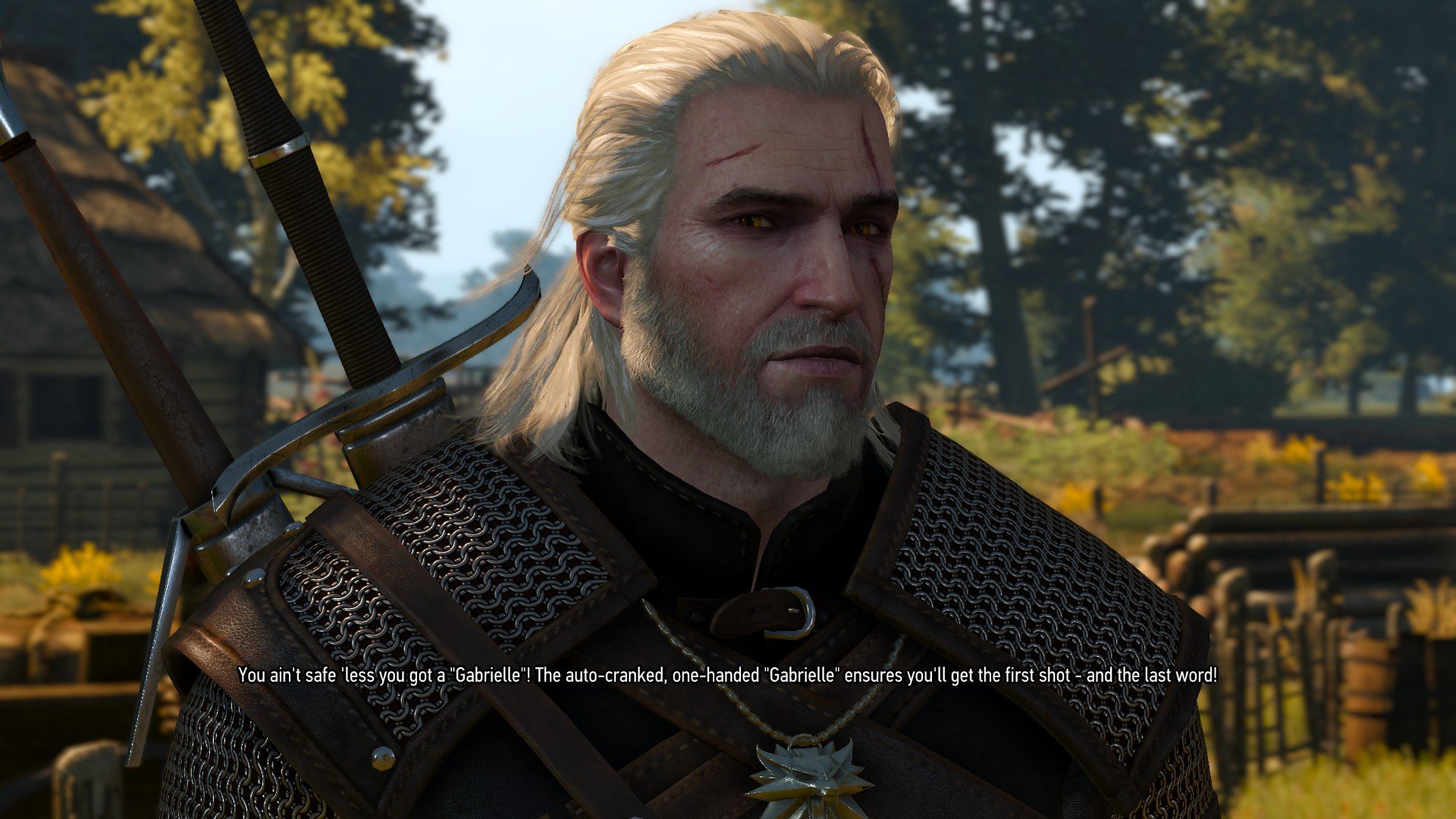
Geralt himself gets in on a little of the slapstick, though unintentionally. The best way to describe how he moves is that he is a vehicle, and one that lacks power steering. Turning him in a confined space is a nightmare. Geralt’s also capable of running and jumping, but his jumps are in need of refinement. Currently, pressing jump has Geralt finding the quickest way to haul himself hurtling in the opposite direction to where you needed him to go. After not being able to find a mouse sensitivity sweetspot, and after a lot of frustration in the inventory screen and during a certain minigame, I switched to my aging controller. My experience improved considerably from then on out.
Combat is both challenging and rewarding. Experimentation is again, encouraged: I found that one of Geralt’s signs, minor spells that Witchers cast, was able to knock men from horses. From there, Geralt was able to execute the grounded fighters without a struggle. I realised that a similar technique could be applied to flying enemies, and cursed myself for having not thought of it earlier. It wasn’t too long ago that I had been fighting a griffin, after all.
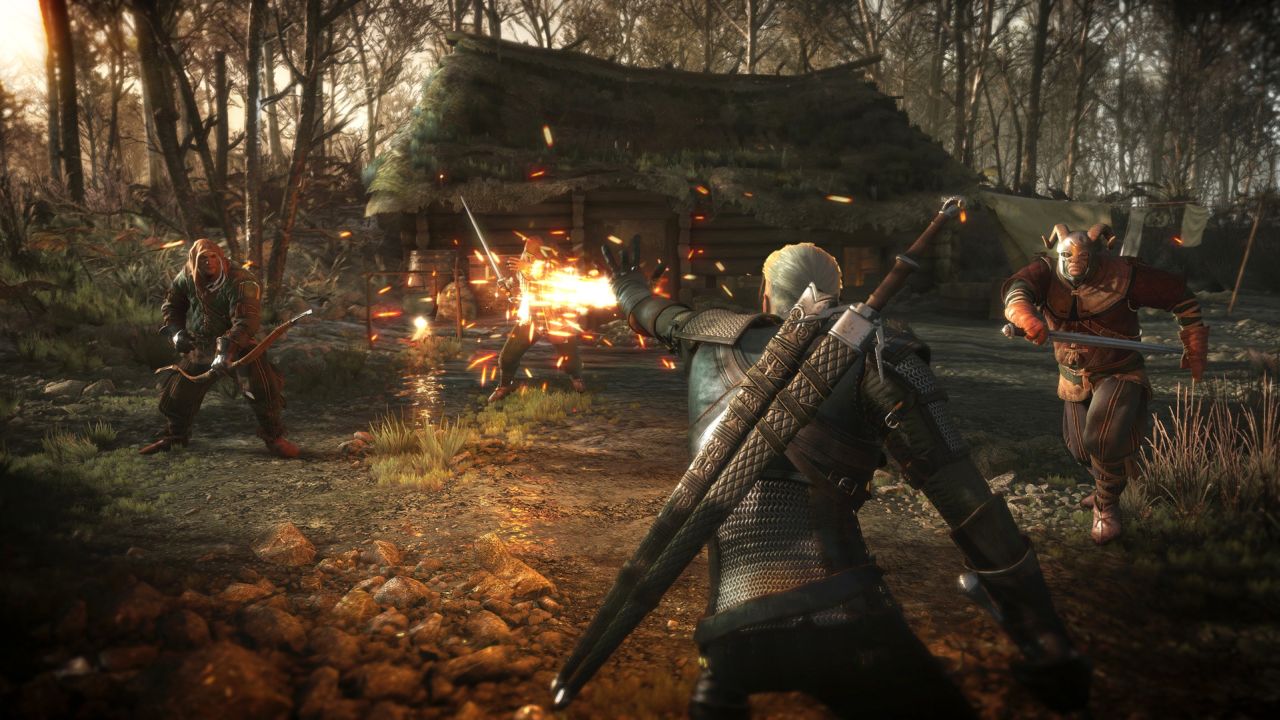
Signs, swordplay, bombs, potions and oils are Geralt’s main tools in combat, and The Witcher 3: Wild Hunt’s crafting ensures that you’ll be making the majority of them yourselves. Weapons and armor both degrade over time, and require repair in order to function properly. For a small fee, craftsmen can also take materials provided and upgrade Geralt’s current gear or craft entirely new items for him. You’ll find yourself spending a lot of time in the company of blacksmiths, so why not challenge a few to some cards?
That’s where Gwent, The Witcher 3: Wild Hunt’s amazing minigame, comes in. Gwent has its roots in games like Goofspiel, being a simple game to learn but a complex one to master. Supposedly an analogue for how a battle unfolds, Gwent sees players placing numbered cards across three different zones. The first player to have the highest numbers on their side of the board for two rounds wins. It’s not as crucial a part of the game as Triple Triad was for Final Fantasy VIII, but it was compelling enough that I had to force myself away from it, lest this turn into Gwent: A Review.
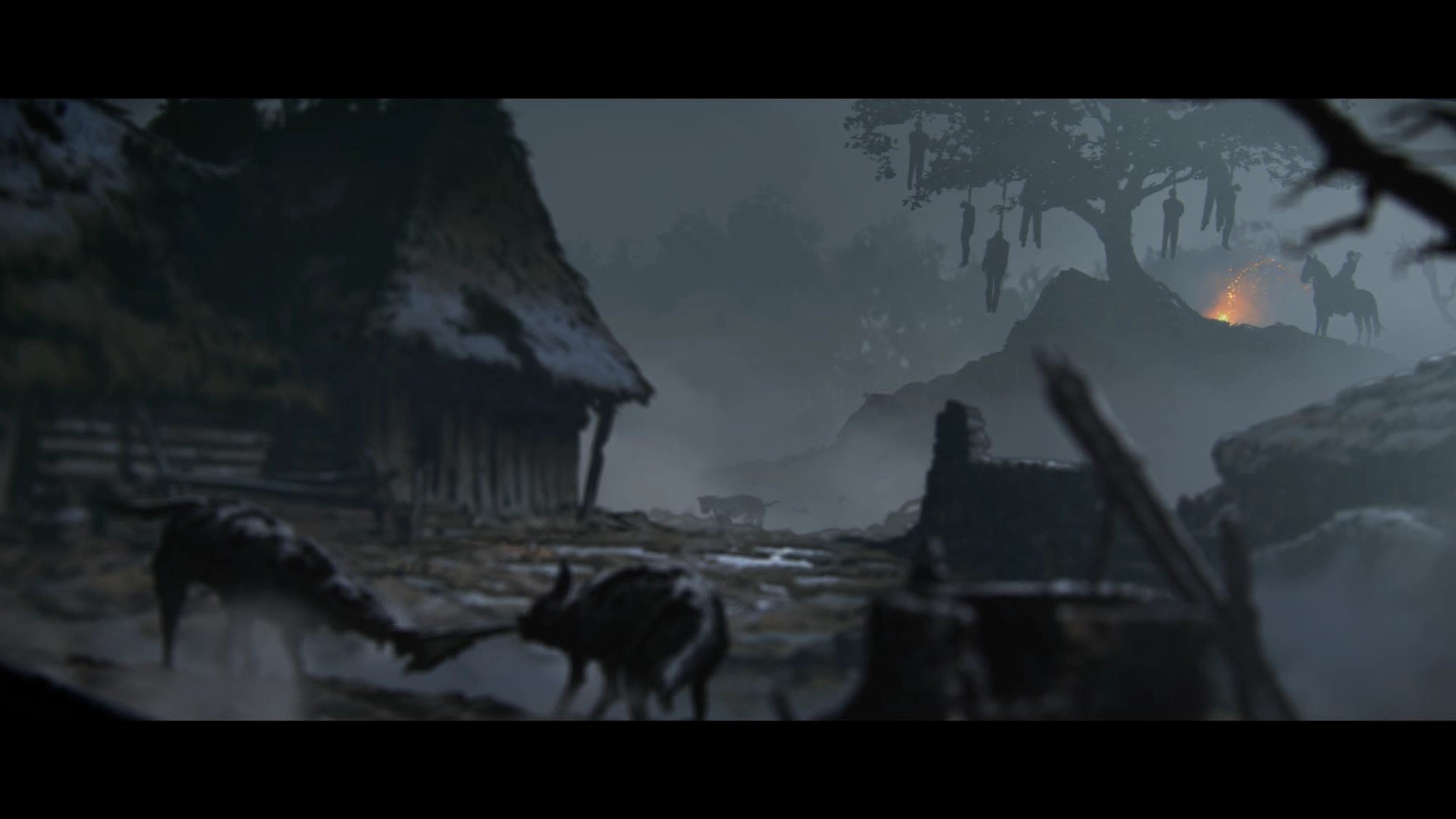
Load times are disguised by short recaps of relevant main quests, matched to panning images like the one above. Unless you’re re-loading a save or just opening the game, you won’t actually see them often at all. The Witcher 3: Wild Hunt really is an open world. Gone are the days of plotting where to base your Skyrim life to minimize loading transitions: if you see something in The Witcher 3: Wild Hunt, you can usually walk up to or inside of it.
The romance aspect of the game won’t set any ponds on fire for originality. Geralt’s two primary love interests are Betty and Veronica, essentially. Along the road to finally choosing one of them, he can also engage in some more casual dalliances on the side. A lot of the material connected to them was pretty campy, though sadly not as outright funny as Dragon Age: Origins could be with its potentially wildly mismatched characters. The game actually opens in the aftermath of a romance scene, treating the player to some eye-rolling titillation. As a first time entrant to the Witcher world, I didn’t really appreciate having one of its major characters introduced by a lingering, NSFW shot of her naked body. It took most of the prologue for the immature taste left by that scene to wash out.
On that front, the game attempts to have something for everyone, with Geralt getting his own share of sexualization. There’s actually a burgeoning Twitter campaign for even more of this, though I can’t imagine why.
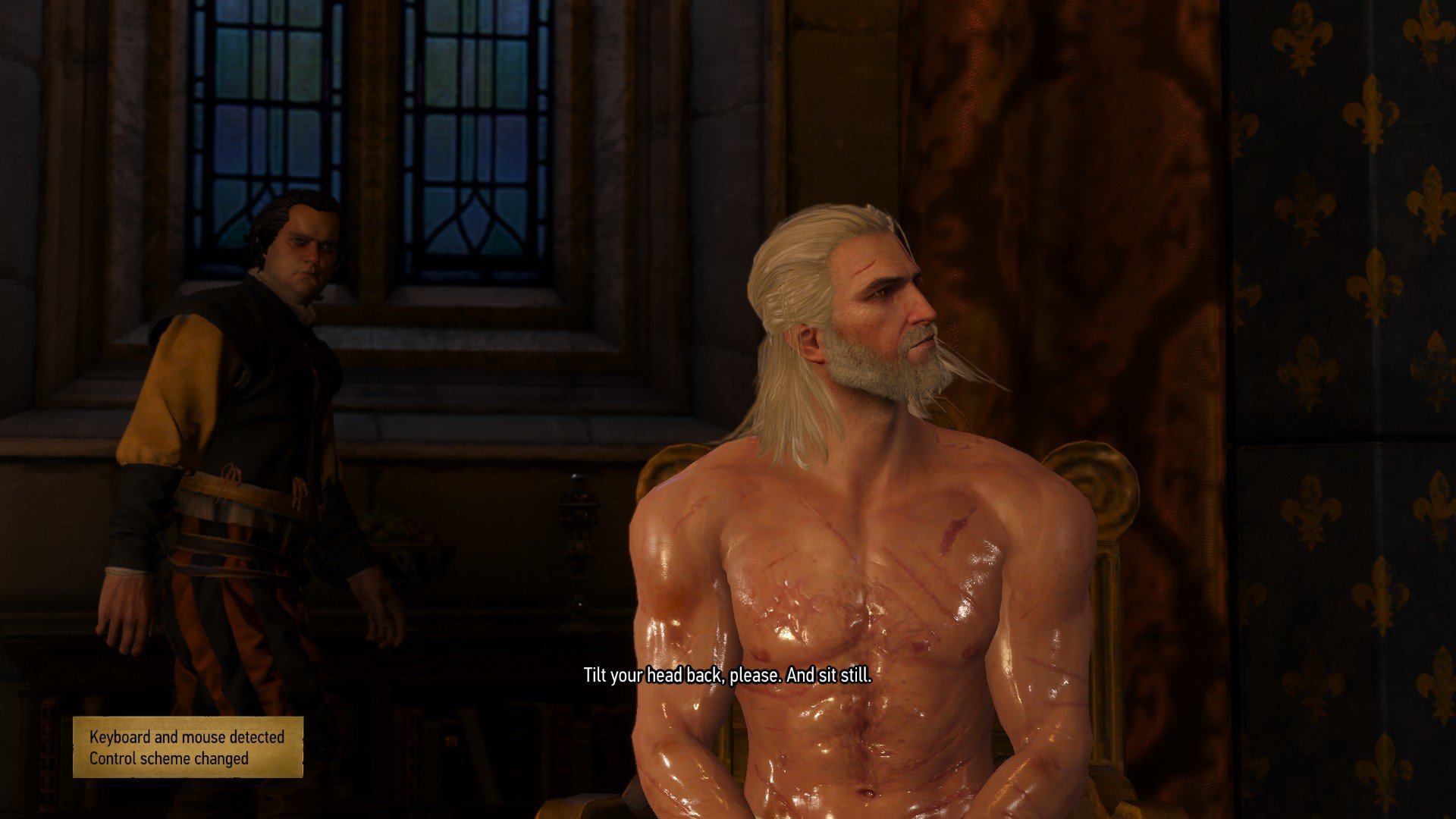
That glistening Geralt is probably a great way to segue into discussion of the game’s graphics. The Witcher 3: Wild Hunt is quickly becoming the new measuring stick for graphics cards. Still, even without maxing out the game’s graphics options (including the performance-killing hairworks) made for a beautiful game. Environments are highly atmospheric: villages are grimy and impoverished, forests are lush, battlefields are appropriately disgusting. I found myself dismounting from Roach, Geralt’s faithful horse, and letting him wander rather than slog through the mud and gore with me. One of the most impressive things was the way that Geralt actively listens to anybody speaking to him. You can really see the gears ticking with him, and it’s a wonderful detail.
On the subject of HairWorks, I was surprised to find otherwise squalid, rain-soaked peasants with lustrous, well cared for hair. If HairWorks was enabled, their hair would be correctly displayed as wet, but it still wouldn’t change the fact that the redhead’s haircut and dye is better than mine. Also, and this is important: Geralt’s beard can grow. The prologue’s conclusion sees it shaved off in preparation for an important meeting, but the passing of in-game days has the beard grow back in, and it’s glorious.
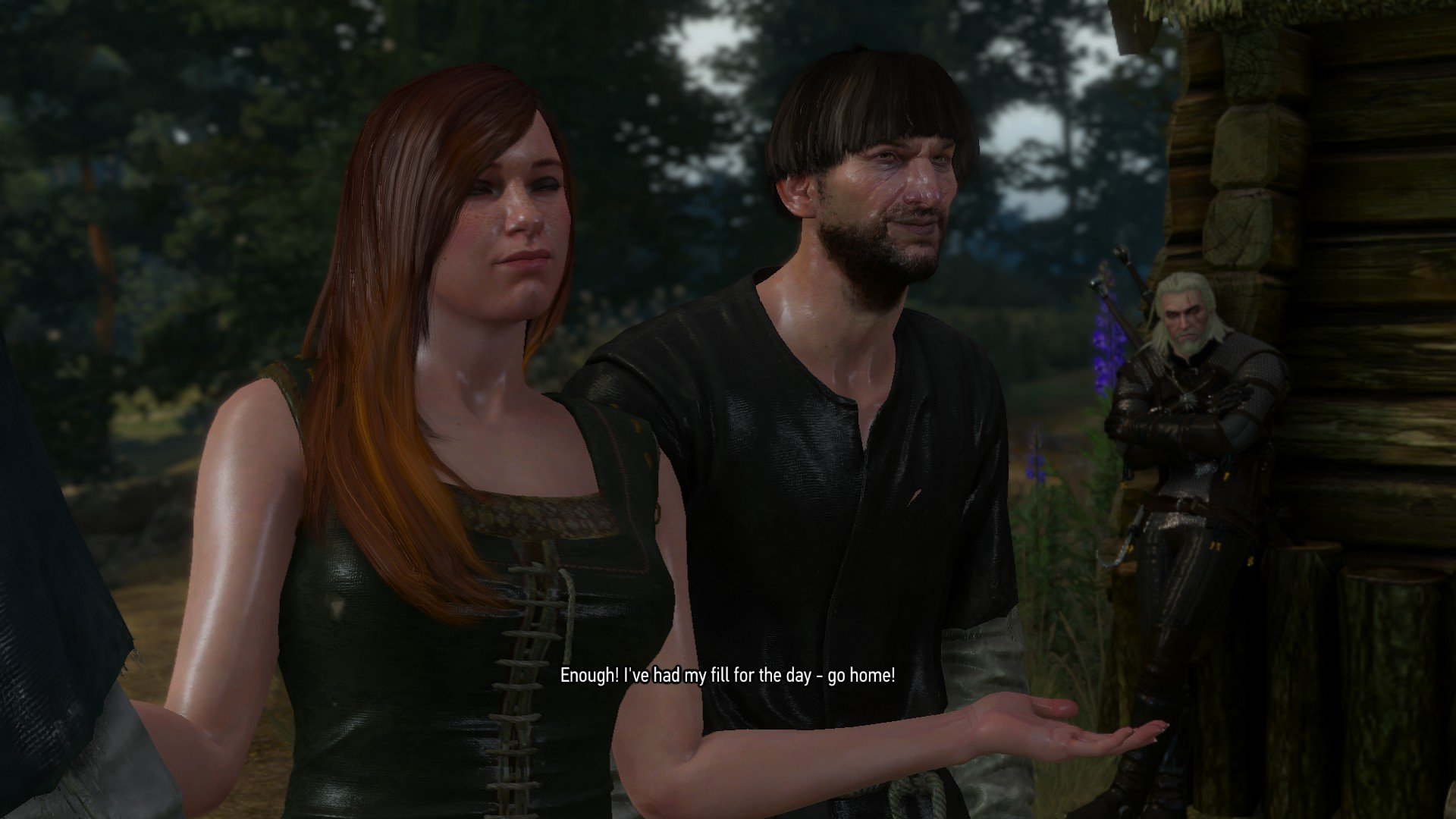
Dynamic weather is another aspect of The Witcher 3: Wild Hunt that surprised me. Days and nights can be sunny, overcast or rainy. Children will play in water-filled ruts in the road. Peasants will wash their clothes in the sun. It’s a small, fantastic touch, that adds a little more authenticity to the world. CD Projekt Red have been relentless in their attention to detail, and it really shows in nearly every aspect of the game.
The Verdict
It’s a sprawling, ambitious, beautiful representation of a dark fantasy world, and games like this don’t come along often. By no means perfect, The Witcher 3: Wild Hunt still one of the year’s biggest and best releases.


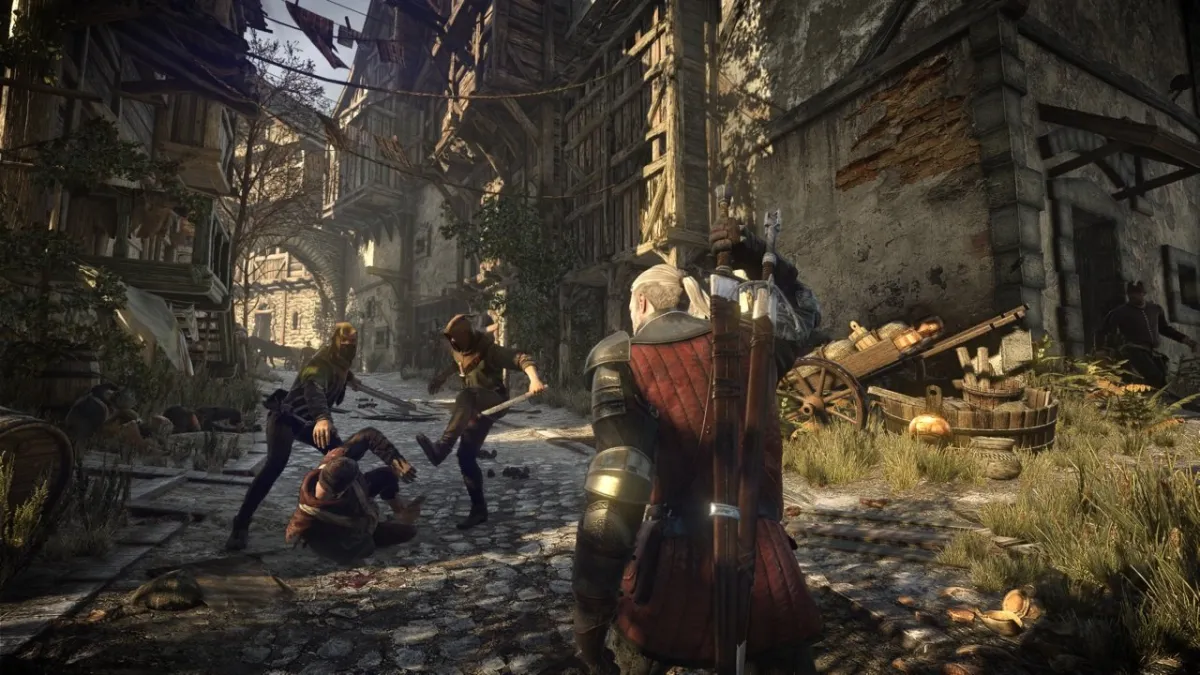








Published: May 24, 2015 08:21 am